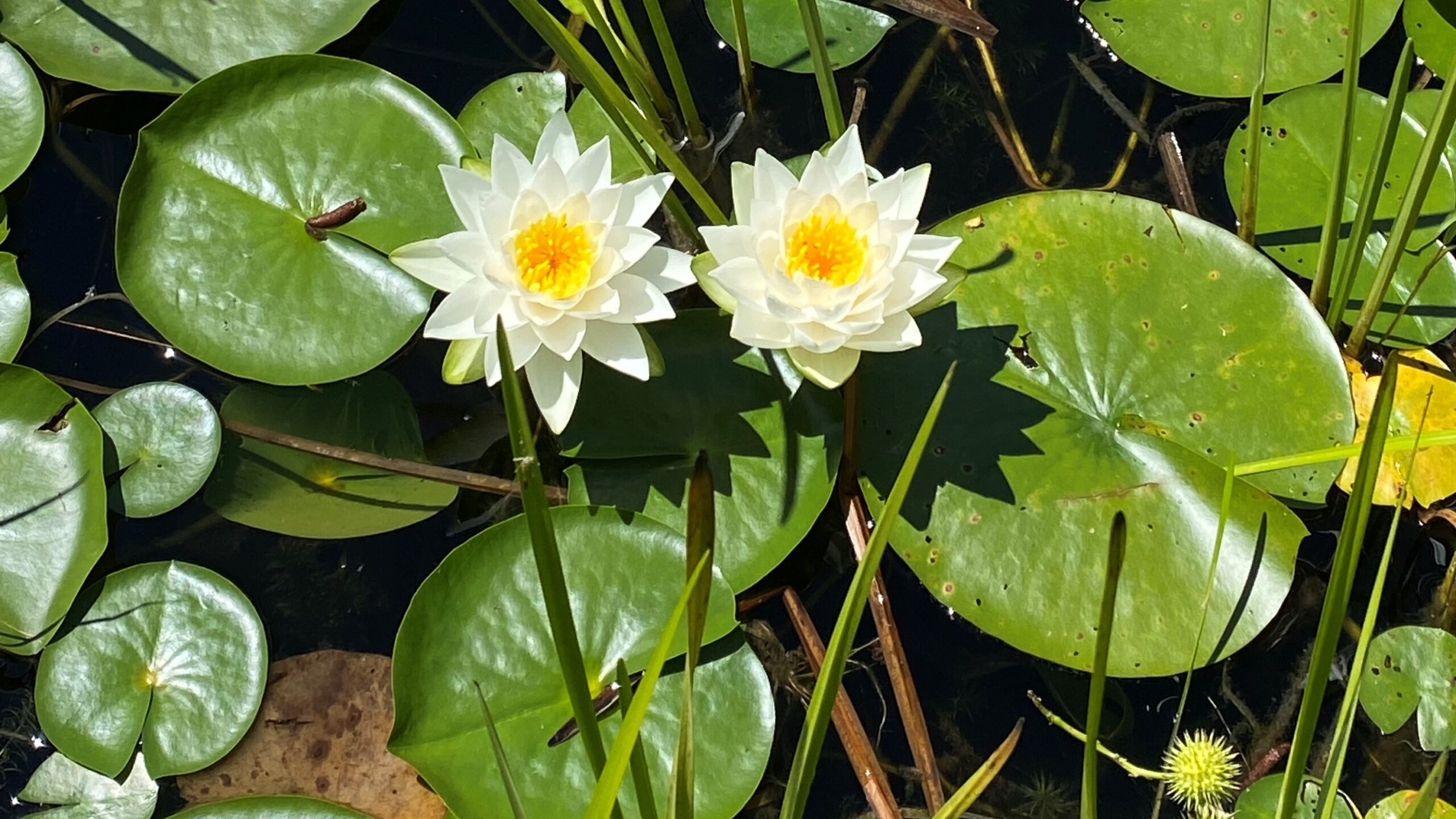It’s hard to ignore the eye-catching flowers warmer weather brings us this time of year. One of Maine’s most well-recognized flowers, the fragrant water lily, is no exception. Sitting atop many still ponds and marshes, fragrant water lilies are a common sight from the time they bloom in early spring to the first frost in September. While they are often admired for their great beauty, the ecological importance of these water lilies is equally admirable.
Fragrant water lily (Nymphaea odorata) has many common names, going by white water lily, sweet scented water lily, and beaver root to name a few. Though usually found with white flowers, Nymphaea odorata can be found in pink variants as well. It is easily identified by its characteristic floating leaves that are large and circular with a pie-piece shaped notch. The flowers themselves are made of rows of white petals growing gradually smaller as they approach the center, where over 70 stamens (the male reproductive organ of the flower) produce yellow pollen.
 At Oak Point Farm, you can find fragrant water lilies floating atop the freshwater pond. With a closer look you’ll begin to see the many benefits they bring to the pond ecosystem. The structure of the plant creates unique microenvironments. With its broad leaves it provides safe havens for small animals like minnows and frogs, where they are protected from larger predators and the hot summer sun. Insects, such as damsel flies and dragon flies can be found resting on the leaves between bouts of flight. By shading areas of the pond, the lily’s leaves reduce the amount of sunlight that reaches the water and keep the pond cool, which limits the amount of harmful algae that could grow in a warmer, full sun environment.
At Oak Point Farm, you can find fragrant water lilies floating atop the freshwater pond. With a closer look you’ll begin to see the many benefits they bring to the pond ecosystem. The structure of the plant creates unique microenvironments. With its broad leaves it provides safe havens for small animals like minnows and frogs, where they are protected from larger predators and the hot summer sun. Insects, such as damsel flies and dragon flies can be found resting on the leaves between bouts of flight. By shading areas of the pond, the lily’s leaves reduce the amount of sunlight that reaches the water and keep the pond cool, which limits the amount of harmful algae that could grow in a warmer, full sun environment.
Fragrant water lilies are also a bountiful food source for a wide variety of creatures at Oak Point Farm. Bees, flies, waterlily thrips, waterlily planthoppers and more will feed on the plant’s pollen, leaf structures and petioles. Ducks and other waterfowl eat the seeds dispersed by the plant. Beavers, muskrats, deer, and even moose are known to eat the plant’s rhizomes; the thick stems that grow just below the soil surface.
So, next time you’re at Oak Point Farm, or any of our other pond-privy preserves, make sure to thank the humble fragrant water lily for all it does to support these unique and lively ecosystems.
Emma Heffner is a recent graduate from the University of Vermont with a degree in Environmental Studies. She is the 2022 Summer Intern for the Boothbay Region Land Trust.





